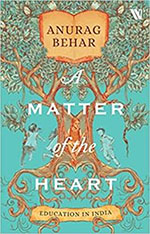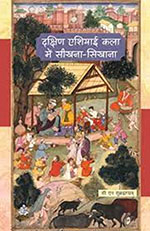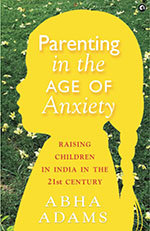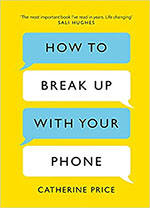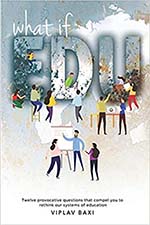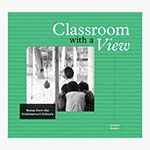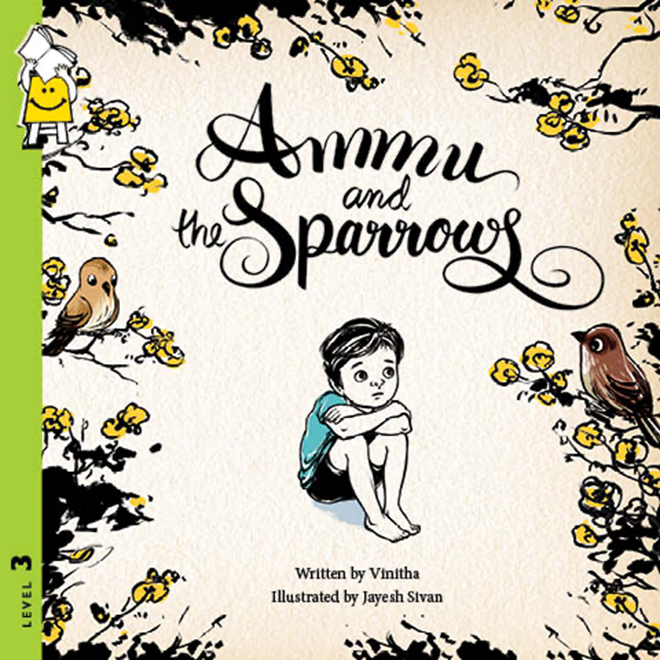Education
This book is a collection of essays in honour of Professor Krishna Kumar, doyen in the education world in India, by his former students and colleagues. The Department of Education (or the Central Institute of Education (CIE), as it is more popularly known) is the premier Department for Education Studies in India including the professional courses of B.Ed. and M.Ed, in its academic programmes.
Anurag Behar has a rich experience in the field of education in working with Azim Premji Foundation and travelling extensively at the grassroots level. Like others who have worked in the field, he points out quite rightly, good education is in the end, ‘A Matter of the Heart’.
In the middle of the 19th century, Savitribai and Jotirao Phule began their systematic critique of how they believed caste, gender, and power worked together to suppress women, Shudras, and Dalits. Faced with the prospect of trying to change an ancient system accepted as normal by millions of people, and etched into all aspects of everyday life, the Phules started small: they opened a school for girls in Bhide Wada in Pune in 1848.
Mainstream education in a society as stratified and diverse as ours finds it often difficult to reach children of geographically remote and socially marginalized communities.
This book on the historiography or rather a social-cultural history of education is a rare example of this phenomenon. Subramanium is interested in how education has been imparted over a long duration of history. He begins from the ancient, traverses the medieval and ends with the colonial period.
So, are mathematical models magical or mistakes? Neither is what Erica Thompson systematically demonstrates in her book. She quotes statistician George Box, who said, ‘All models are wrong’, but then, goes on to highlight its second part, ‘All models are wrong, but some are useful.’Mathematical models lie in a place somewhere between blind faith and total rejection—judicious application. The book explores the limitations and pitfalls of relying solely on mathematical models to understand complex systems.
We live in a terribly violent world characterized by hyper-nationalism, militarism, war, reckless social Darwinism and massive environmental disaster. Yet, even amid the all-pervading darkness, some of us continue to strive for the lamp of truth. Possibly, Meenakshi Thapan’s book seeks to remind us that we should not give up but try our best to illumine the new generation through a practice of education that radiates the spirit of love, peace, dialogue and the ethic of care.
Abha Adams’s reputation as India’s preeminent educationist precedes her, and for good reason. As a pioneering force in education, amongst her many accomplishments, her instrumental contribution in the birth and setting-up of the country’s iconic institutions, widely regarded as schools that are centres of excellence—Shriram Schools & Step by Step, themselves speak volumes of her knowledge and insights.
Juvenile, not Delinquent is an elucidation of the author’s rendezvous with the innumerable children who find themselves on the other side of law; the legal quagmire children find themselves in, with little support to navigate the complexities of the juvenile justice system; and the unwavering commitment of those who never give up on them. It is an account of the countless ways the child ‘offenders’ challenge, inspire, and often transform the lives of professionals who work with them.
The title How to Break up with Your Phone reminded me of an essay I had read many decades ago while in school. On ‘Not Answering the Telephone’ was a witty essay by William Plomer in which he expresses his dislike of owning a phone and discusses the inconveniences in having a telephone of one’s own. But the likeness ends there.
Krishna Kumar’s deep and critical engagement with education and its impact on the child is clearly reflected in the slim volume of 18 collected essays, Smaller Citizens: Writings on the Making of Indian Citizens. Some of these essays have been published earlier, while others appeared in the form of lectures which the author had delivered at various fora. Bringing these essays together in a single volume signifies the common theme that binds all of them together.
Discussions on what is wrong in classrooms and institutions of education are part and parcel of staff-room conversations among teachers. Some reflective teachers take these discussions as trigger points for further exploration through reading and research. However, there are few spaces where books cover a range of issues in education, with a solution focused approach that is positive, but not prescriptive.
If the poor have to be schooled in struggles to reclaim their humanity, how can schooling help the privileged to reclaim theirs? The book under review, Classroom with a View: Notes from the Krishnamurti Schools seeks to provide a possible answer. The history of these schools spans nearly a century and we have a large corpus of literature on them.
In the period between 1850 and 1947, parallel to the slow expansion of a public education system set up by the colonial administration, the subcontinent witnessed several experiments in both school and higher education. Almost all of these experiments were in one way or another a response to the crises brought about by the colonial experience (including the colonial policies on education).
All three published by Eklavya and edited by Disha Nawani, Nandini Manjrekar, Rashmi Paliwal, Ruchi Shevade.. All three books published by Eklavya and edited by Disha Nawani, Nandini Manjrekar, Rashmi Paliwal, Ruchi Shevade, Noam Chomsky. while speaking on ‘values for a new world’, identify three major problems of the world today
The book Education in India: Policy and Practice is a collection of papers/articles on education written in the journal Social Change over a period of five decades. It was published in 2021, when Social Change celebrated its Golden Jubilee.In his introduction to the series, Manoranjan Mohanty writes about the major social and economic changes and mass movements in India in the post-Independence period. Specific theme based issues of the journal have captured these developments.
Bobo and the Worms is by Abokali Jimomi of Nagaland. Any book for early readers must be accompanied by illustrations that fire imagination. Canato Jimo’s illustrations perfectly accompany this simple but prettily told story. Which child does not like visiting her grandma? Grandparents are special people in any child’s life. There is a warmth to them that cannot be replicated. Grandparents are not difficult or demanding like parents. Neither are they rough and unruly like one’s own playmates. They can get down on their knees and play with you or open their knees wide and rock you when you need comforting…
2019
This book is an effort in reading promotion among children that Pratham Books stands for. It is a ‘Learning to Read’ book or ‘Level 2’ book. The previous (Level 1) is ‘Beginning to Read/Read Aloud’. The next two levels (Levels 3 and 4) are ‘Reading Independently’ and ‘Reading Proficiently’.As the inside back cover tells us, author Anurupa Roy is a puppeteer, puppet theatre director and puppet designer. She is the founder-managing trustee of the Katkatha Puppet Arts Trust, Delhi. She has directed many puppet performances and undertaken international tours with her puppet group…
Ammu and the Sparrows is a sensitively written story dealing with the curiosity and questions and long wait of a child—for his parents. The book has been categorized in the green coloured Level 3 book—those books that are meant for children who are ready to read on their own.Ammu spends his days on his Ammamma’s terrace, looking out and waiting. Is he waiting for Amma and Accha sparrows to come or is he waiting for someone else? Is this wait going to get over any time soon? The open-ended story leaves the reader with many questions like these. And the best part is that the story does not give us ready-made answers, but allows the readers to imagine and construct the answers themselves…
Here is a bilingual book written by 16 children coming from different parts of India and different walks of life. They speak their heart out—they tell us in clear, bold, straightforward words what they wish for. Their dreams, wishes, aspirations, hopes—is what is the core of this book. And adults, elders, parents and teachers—may as well listen. As India inches towards the 75th anniversary of its hard-earned freedom in 2022—this illustrated book is a reminder to us adults as to what we have not been able to give to our children in so many years, and pay attention to what they yearn for…


